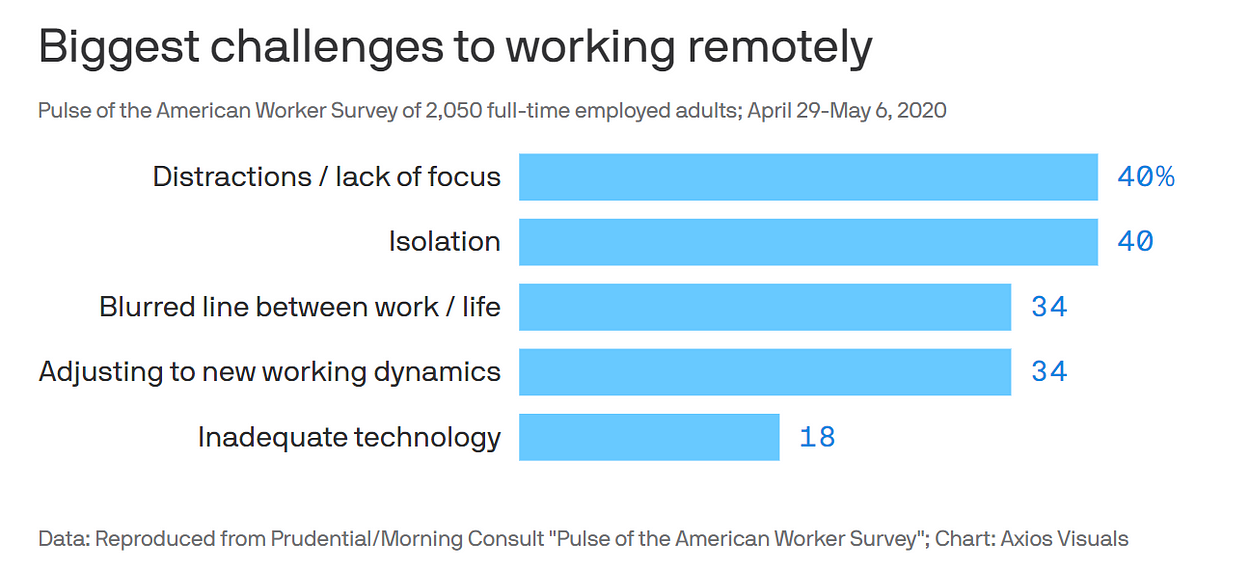Employers are transferring their cost and risk to work-from-home workers (more workers will be without jobs)

The pandemic has forced a large-scale experiment of working from home (WFH) by workers and employees. It has gone so well that many employers are expanding their remote work arrangements into the foreseeable future. Many employees, after tasting it for the first time, are wanting to continue working remotely. But in time to come, this enjoyment will turn sour.
This working from home experimentation is a proof of concept for mass job automation and transfers. Workers should be worried about it rather than embracing it.
Many jobs can now be automated through machine learning and artificial learning. Jobs can also be ‘broken down’ and outsourced globally to anyone who can do that same job at a much lower cost.
Given that cost is the key motivating factor for many employers to adopt working from home arrangements, outsourcing of jobs and the lowering payroll cost will become very appealing.
More workers are going to work from home (WFH)
Google has said a majority of its employees can work from home until 2021. Twitter will allow its employees to work from home permanently, even after COVID.
Similarly, a recent Kung Group survey of 500 venture-backed founders indicated that 71% of CEOs will let their employees continue to work from home after their offices reopen. Two-thirds of CEOs are considering letting go of or downsizing their offices.
Close to 75% of the 317 CFOs surveyed by Gartner said they will shift at least 5% of their company’s employees to a remote working model.
When all of this occurs, there will be massive cost and risk transfers from employers to workers, who will become more vulnerable.
Additional operational cost post-COVID
Employees do not want to contract COVID in their workplaces. There are high expectations for employers to comply with the high standards of workplace safety and wellbeing.
Many organisations will be struggling to balance the health and wellbeing of their workers with the viability and sustainability of their businesses.
In a post-COVID world, there will be a higher expectation from employees. They want employers to provide a working environment that will prevent them from getting the virus.
Employers owe a duty of care to their employees regardless of their working location, even at home, to keep them safe in the workplace. It is a legal requirement for many countries. This creates a massive additional expense for employers.
The additional cost items for providing a COVID-safe working environment includes:
- Increasing office and workplace cleaning especially in high-touch areas. (Refer to CDC guidelines for office buildings)
- Implementing new cleaning, building entry and security protocols.
- Daily disinfectant spraying after closing hours.
- Retrofitting, redesigning or modification of common areas, workspaces and workstations to maintain adequate social distancing.
- Consolidating entrances and exits to control traffic and minimising human contact.
- Providing catered lunches, staggering lunch breaks, providing social distancing canteens and staff kitchens, and modification of amenities.
- Provision of external guest registration and screening areas.
- Self-screening stations before going on-premise.
- Staggering work shifts and maintaining gaps between shifts.
- Installing protective screens and issuing personal protective equipment.
- Increasing sick-leave provision.
- Limiting the number of people in lifts and on-site locations.
- Eliminating the open floor plan.
- Designating one-way walkways or corridors.
- Installation of sanitizer stations.
The list goes on.
The compliance cost for employers can and will be extra-ordinary if this is taken seriously.
Businesses are already struggling financially
The public health response to COVID has severely impacted many economies and businesses. Many employers have not survived the impact. And many will not.
If they did, cashflow is a major problem. Customers in isolation do not spend. Worried customers will not be spending. Many have been laid off. They will not be in a position to spend until they secure their next job.
With limited cash at hand, many employers don’t have money to spend. They can’t afford to keep their employees safe from contracting the virus when they return to work.
To continue operating in this environment, many organisations will be trying to stay open while planning for the future through a combination of cash saving tactics and digital models.
Shifting of cost to employees
The next best option, therefore, is to keep workers at home working as long as possible, even permanently.
A survey of CFOs noted that the shift to more remote workers is a cost-saving measure. Nearly three out of four finance leaders surveyed said they plan to move at least 5% of their workforce to a full-time, remote schedule. About 4% said they would leave 50% of their workforce remote, 17% said 20% would remain offsite, another 25% said 10% of workers wouldn’t return to an office.
Apart from avoiding the additional cost for providing a COVID-safe working environment, other items for cost-reduction or cost-shifting include:
- Office accommodation rental and utilities.
- Provision of on-site staff benefits and amenities.
- Employer-provided car parking.
Employers can save a lot of money when a significant portion of their workforce works remotely.
Increased unintended risks for both employers and workers
When remote working becomes the norm, distractions, social isolation and mental health are some of the unintended consequences that are likely to be experienced by WFH workers.
The graph below shows the top five challenges for workers working remotely. These can be long term slow brewing impacts.

These risks will be emerging and employers must manage them.
Other downsides of remote working include:
- Less casual interaction with colleagues.
- Lack of in-person collaboration.
- On over-reliance on Zoom.
- Longer working hours.
- Increased work expectations and stresses.
- Isolation, distractions and lack of boundaries between work and home life.
For some workers, there will be upsides of remote working.
